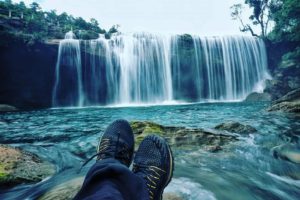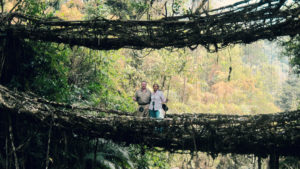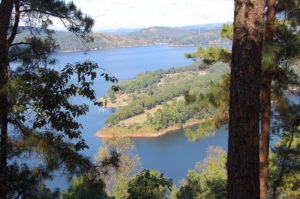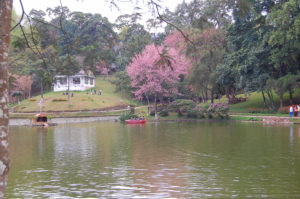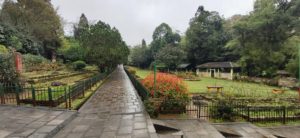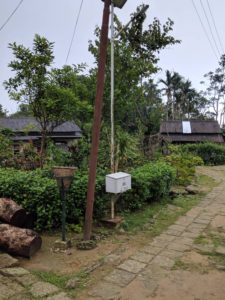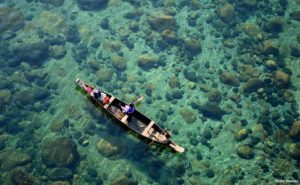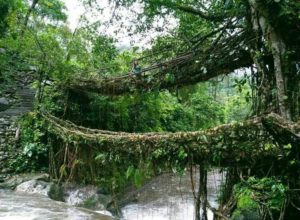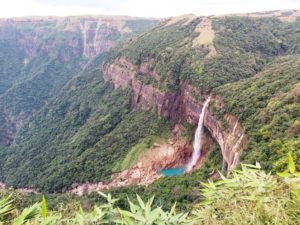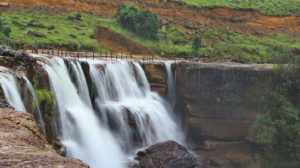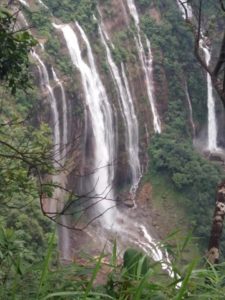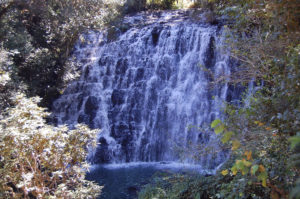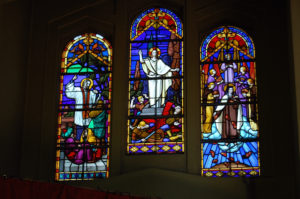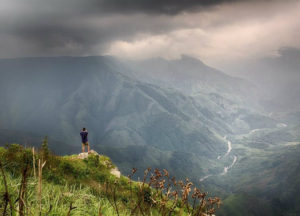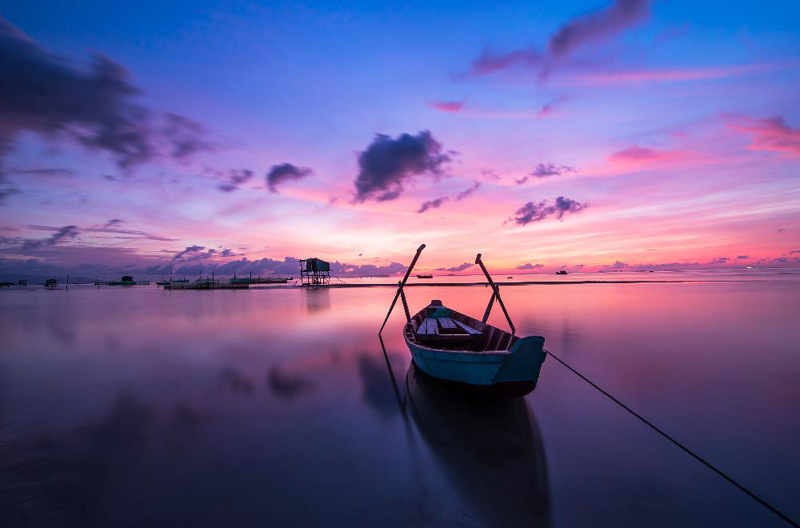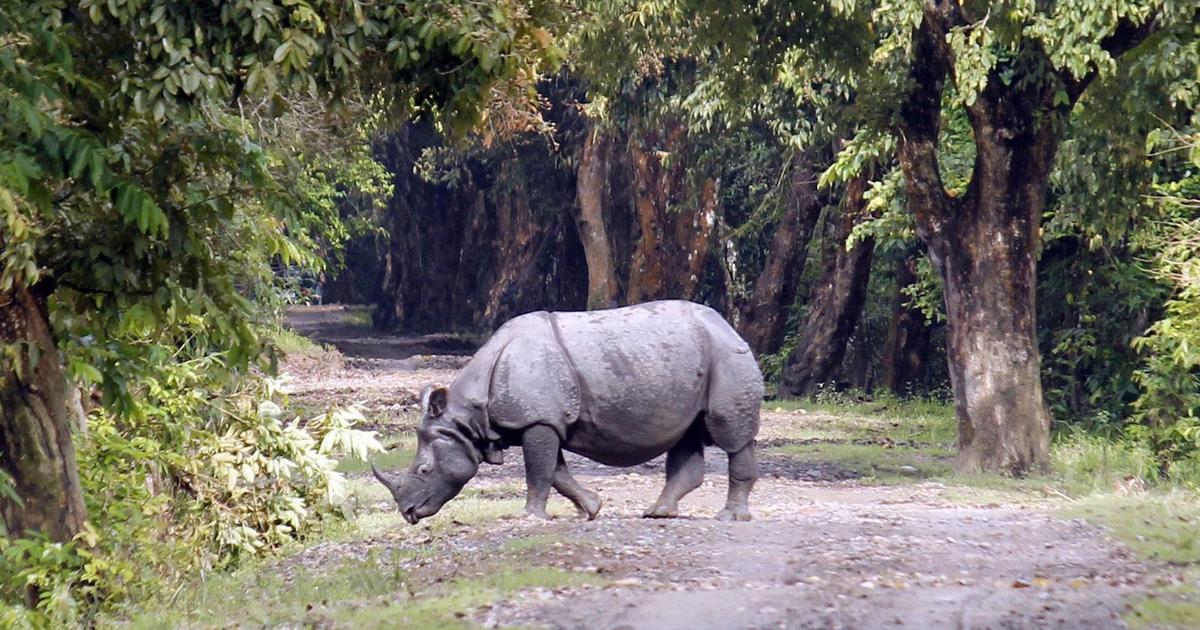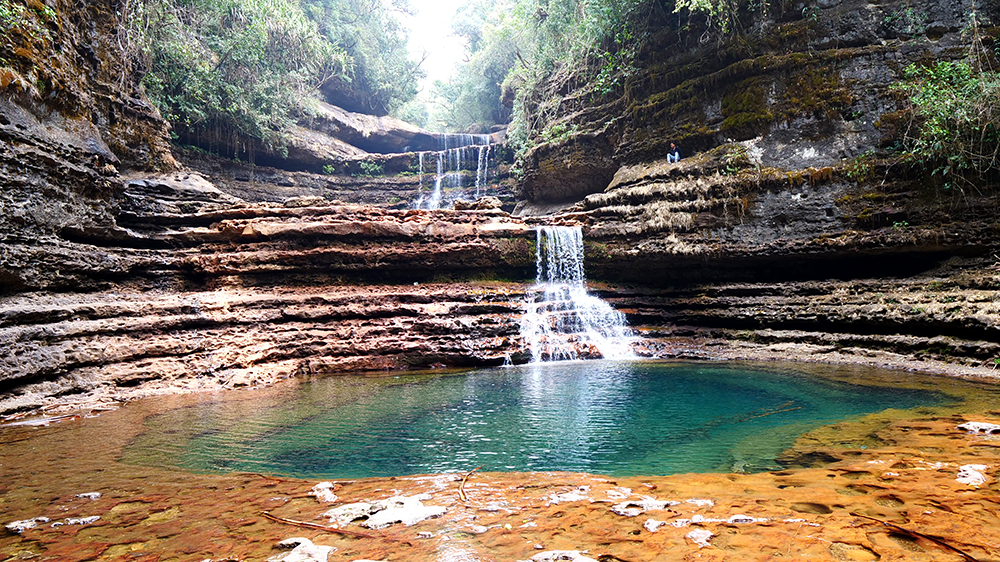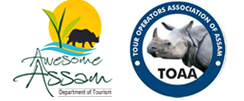Tour Highlight
This 7 Nights / 8 Days exciting vacation package is designed for individuals travelling with friends or family.
- Krang Suri Waterfalls
The tour package offers the visit to the beautiful hill stations of Meghalaya like Shillong & Cherrapunjee and enjoy the spectacular waterfalls along with the chances to play with the clouds.
- The Double Decker Living Root Bridge
Experience The Natural Wonder – The Double Decker Living Root Bridges In Cherrapunjee, The Cleanest Village In Asia
- Mawphlang Sacred Forest
Opt for a wonderful walk inside the sacred forest of Mawphlang while the polite local guide will tell you about cultures traditions and what nature gives us in the form of medicinal plants and foods
- Children at Kongthong Village
Set for a day long trip to Kongthong – the village of Tunes & Whistles and explore the people and their happiness, satisfaction and uniqueness still uninfluenced by the urbanity brought down by the tourists.
- Boat ride in Dawki on Umkot river
Of Course, Not To Miss The Boat Ride In Dawki On The Crystal Clear Umngot River
Itineraries
Day 01: guwahati / shillong (95 kms, 3 hrs drive)
Arrive guwahati by flight.
Meeting upon arrival and depart for shillong, the scottland of east.
En route visit
- Umiam Lake
Barapani (umiam lake): as per the legends, two heavenly sisters decided to make their way to meghalaya. However, one of them had reached the destination and the other could not due to some reason. So the former could not traced out her sister and started crying with her broken heart. She cried so much that and a lake was formed with her tears. Locally known as umiam lake, barapani means vast waters.
Today it becomes a hub for the water sports activities such as speed boats, sailboats and water scooters. Adjoining to the lake, the nehru park offers an aviary and a collection of orchids and butterflies.
Arrive shillong and check in at hotel.
Shillong: the capital of meghalaya, shillong is one of the major tourist destinations in north east india. The british loved this place so much that they had established its capital for eastern bengal and assam for its climate and unique topographical features the british referred shillong as the “scottland of the east”.
Later visit:
- Wards Lake
Wards lake: wards lake is located in the heart of the shillong city adjoining to the governor’s residence. Shaped like a horseshoe, it is one of the prominent hang-out spot in shillong. This century old lake was built by an engineer named mr. Pollock. Hence it is also known to be as “polok’s lake”. One can opt for boating and pleasant walks on the cobbled sand stone pathways covered with varieties of flowers. The lake also has an arched bridge from where one can feed the fish.
- Lady Hyderi Park
Lady hyderi park: lady hydari park is among the most frequented tourist spots of the region. The park is dedicated to the first lady of the province, lady hydari, wife of the governor of assam. Lady hydari park encompasses a wide variety of local flowering plants and orchids, and is landscaped in japanese style. Lady hydari park is among the most frequented tourist spots of the region. The park is dedicated to the first lady of the province, lady hydari, wife of the governor of assam. Lady hydari park encompasses a wide variety of local flowering plants and orchids, and is landscaped in japanese style.
Overnight at hotel.
Day 02: shillong / mawlynnong / dawki / cherrapunjee
Morning after breakfast depart for a whole day excursion to mawlynnong:
Mawlynnong village has earned the distinction of being the cleanest village in india. It is situated 90 kms. From shillong and besides the picturesque village, offers many interesting sights such as the living root bridge and another strange natural phenomenon of a boulder balancing on another rock.
- Mawlynnong Village
Mawlynnong nestled in the pristine hill state of meghalaya, is along the indo-bangla border. This cute and colourful little village is known for its cleanliness. The main occupation of the villagers is agriculture. They mostly grow betel nut. About 82 households live in mawlynnong. Keeping the surrounding environment clean is an age old tradition. Discover india magazine declared the village as the cleanest in asia in 2003.
A dustbin made out of bamboo is found all along the village. Every one makes it a point that dirt and waste are not thrown everywhere. All the waste from the dustbin is collected and kept in a pit, which the villagers use as manure. The villagers are now on a mission to ban plastic. The village with cent per cent literacy is conscious and they are spreading the message of conservation and protection of the forest. Locals plant trees to ensure that the virgin forest is kept intact and also replenished.
Mawlynnong’s fame is now drawing an endless stream of guests from across the country and abroad. Although residential facilities are still scarce and are in the process of being developed, the existing one constructed from bamboo and thatch is quite hospitable and restful. Mawlynnong is an artist’s delight and the sort of getaway that would titillate creative writers and poets.
- Boating in Dawki on Umkot river
Dawki: a day’s excursion from mawlynnong, dawki lies but 2 kms from bangladesh. Despite the fact that the area is located in a place that has been for years demanding development, one is amazed by the quality of the roads, and the road to dawki perhaps epitomizes the idyllic hill drive. The black metalled road, offset by the rich, wet green and dark red-brown patches offered a smooth contrast that technology can scarcely capture. The cool, wet air brushes over your face and refreshes and revitalizes you as it enters your body. Dawki is a small village and its main attraction is the umngot river that marks the natural separation between the khasi and the jaintia hills. The river can be forded by a suspension bridge that connects india to bangladesh and facilitates trade between the two nations. The umngot is the site for a boat race that is held in march-april, but even otherwise, seeing this large emerald-green serpent threading its way through the hills, with fishermen’s boats dotting its surface, right into the plains of bangladesh, is a sight whose majesty echoes long after you leave it.
Later depart for cherrapunjee
Arrive cherrapunjee and check in at nature resort.
Cherrapunjee is a small hamlet, situated at an altitude of about 4823 feet (1484 m). Locally known as ‘sohra’. Cherrapunjee is located in the southern most point of khasi hill sharing the border of sylhet district of bangladesh. Cherrapunji offers a panoramic view of the hilly terrains, deep gorges and valleys with its spectacular waterfalls. It was once having the record of being the wettest place on earth, with an average rainfall of about 1150ms. However, this record has been overtaken by a nearby place mawsynram
Evening free at leisure.
Overnight at resort.
Day 03: cherrapunjee
Morning after breakfast full day trekking and nature walk to the living root bridges with a local guide
The living root bridges: these exclusive bridges are found only in cherrapunjee. Some of these bio engineering wonders are 53 feet, 70 feet, 100 feet long. The double decker root brides have two levels and can carry many people at a time. These bridges are not reachable by road and one has to walk in order to reach these living wonders.
Trekking options:
Trek to the living root bridge, ummunoi.
Duration: 3-4 hours from the resort. Distance 4 km down and up 1000 feet approximately. Trek open throughout the year.
This trek starts goes down hill through village sohsarat. The steps are relatively steeper in two short stretches. Half the distance is covered by steps going down hill. Then there is a jungle path going along the sides of the hill leading to the living root bridge with a few steps after short stretches of sloping foot path. Moss thrives on these sandstone steps during the monsoon and makes them slippery. However, the steps can be negotiated easily with little care by locking the hind of your feet in the depressions between stones in the steps. Our guide comes handy to steady you. The path thru’ the jungle and bay leaf gardens is quite interesting. As you near the bridge you hear the sound of water flowing by the stream. After admiring the living root bridge and taking snaps, get down into the stream and take a refreshing bath in the stream. En-route you get to see snails, millipedes, butterflies and spiders in their webs.
After seeing the bridge you move ahead to a naturally formed dolomite archway. Notice how the villagers tap the water from the stream by bamboo pipes running long distances to drip irrigate the betel leaf creepers during the dry season in winter.
- Double Decker Living Root Bridge
Trek to double decker root bridge and natural swimming pools
Duration: 9 hours involving 7 hours walking, down hill 2500 feet and up.
Total distance of approximately 25 km of which 10 km is by a beautiful mountain skirting road commanding a beautiful view of the valley and through three interesting khasi villages and can be done by vehicle if anyone wants to save time and energy. Trek open throughout the year.
This is one of the most beautiful and very popular treks. The high points of this trek are the double decker root bridge and the natural swimming pools in the river bed. The people of the gorge village nongriat where the double decker root bridge is located are very friendly and very special. The trek down stone steps is steep for almost half of the trek down. This trek is open through-out the year and are being used by the villagers of nongriat, nongthymmai and mynteng daily, when it rains and when the sun shines. The steps become slippery during the monsoon months and have to be negotiated with little care to avoid slipping. The rivers in spate and streams and waterfalls in full flow during the monsoon months add magnificence to the root bridges spanning these rivers and streams. Contemplate the raw force of nature standing on the steel rope bridges strung taut across the river 45 feet above normal water level, when the river is in spate after very heavy rainfall. You need to be strong willed and brave.
Before reaching the double decker root bridge you come across the more living root bridges and steel rope bridges. The valley scenery is very impressive. Beyond the double decker root bridge you walk on level ground another 2 km (say 20 minutes) to reach mawsaw steel rope bridge. From here you access our famous natural swimming pools. The larger pool is deep and we recommend only good swimmers to attempt it. The smaller pool can be used by others. However, when the river is in spate please don’t attempt swimming. When the flow is normal, you see the bottom of the pools very clearly, so clear is the water. The colour of the water is so inviting for a swim. After a refreshing swim, it is time for lunch. Please bring back the garbage for proper disposal.
Leave the pool side by 2:30 p.m. To reach the top before it is dark.
Trek to mawsiekhriah / khlieh mawlong
Duration – 2 hours. Distance 6 km approximately. Open throughout the year.
This is a light trek on the top of the hill almost on level ground passing through the forests of laitkynsew, passing by the vegetable gardens in winter, a vast natural rock garden and a steep rock cliff face dropping off a few hundreds of feet overlooking mawlong village and the limestone mines of ichhamati. Along the way you pass by a few mountain streams and can hear some flowing by underground channels. The sylhet plains of bangladesh spreads across to your south from the foot of the hills. You get a captivating view of the plains and can see sylhet, chhatack towns in bangladesh from here. Now border area development authority is developing a road to this place for developing a new park in this area. This trek was earlier open only in the dry months. With the road being laid, this shall become accessible throughout the year. One can retrace the steps to return to the resort or can take a foot path leading up a flight of steps to village sohsarat and reach the resort by a different route. The view of the farm houses and farm lands from the top of the steps is impressive.
This trek can be extended in the dry months. Near the rock cliff face you look for three power lines going down to mawlong village. Adjacent to the electric posts you can locate a foot path leading down mawlong. It would be about a kilometer and a half to the village. Reach the road and walk back by the road to the resort via village mawshamok. This will make it a trek of 14 km.
Later return to the resort
Overnight at resort.
Day 04: cherrapunjee / mawphlang / shillong (56 kms, 1 ½ hrs drive)
Morning after breakfast visit:
- Nohkalikai Waterfalls
Nohkalikai falls: this waterfall located 4 kms away from cherrapunjee and is possibly between 1500 and 2000 feet tall. Known to be the fourth longest fall in the world it carries a pathetic legend behind its name. A woman named ka likai had a illegitimate child. After marriage the husband became jealous of her love for her daughter. One day ka likai was out for work and her husband killed the daughter, cooked her flesh into a meal. When the woman enquired about her daughter, her husband showed the sign of ignorance. Before she went to look for her daughter, she thought of eating something and had the meal that her husband prepared for her. After having the meal she found both the wrist of her daughter in the betel-nut basket. Then she realized what had happened, killed her husband with a dagger and threw herself off this cliff of this falls. This is how the falls got its name which means “fall of ka likai.”
- Mawsmai Cave
Mawsmai cave: this 250m long cave is the major attraction for the tourists in cherrapunjee. This cave is located 6 kms away from cherrapunjee near to mawsmai village. This natural limestone cave is wide enough for a person to walk comfortably, and one can see the myriads of stalagmites and stalactites all over the caves which are growing gradually. The caves are dark inside and electric torches are installed for the convenient of the tourists.
- Dainthlen Waterfalls Cherrapunjee
Dainthlen waterfall: dainthlen waterfall, located at a distance of 5 km from cherrapunjee, is one of the most popular waterfalls. This waterfall has a legend attached to it, according to which it is said that people killed a huge snake living in the cave here to get rid of his terror. Tourists visiting the waterfall can explore the natural rock carvings of the snake, which represent the symbol of evil, greed and corruption.
- Seven sisters waterfalls Cherrapunjee
Nohsngithiang falls (seven sister falls): it is a seven-segmented waterfall, which plunges over the top of limestone cliffs of the khasi hills. The falls only flow during the rainy season. In full spate, the segments stretch most of the way along the cliff. The water falls from a height of 315 metres (1,033 ft) and has an average width of 70 metres (230 ft).the waterfalls get illuminated by the sun from dawn to sunset. The vibrant colours of the setting sun on the waterfalls make it beautiful to behold
Later depart for shillong.
En route visit:
Mawphlang: one of the most remarkable features of the khasi hills are the sacred forests, which have been preserved by traditional religious sanction, since the ancient days. One of the most famous sacred forests is the mawphlang sacred forest, about 25 kilometres from shillong. The sacred grove has an amazing life form of plants, flowering trees, orchids and butterflies. An ideal destination for nature lovers.
- Mawphlang
The sacred-groves which have been preserved since time immemorial, are in sharp contrast to their surrounding grasslands. These groves are generally rimmed by a dense growth of castanopsis kurzii trees, forming a protective hedge which halts intrusion of pinus kasia (khasi pine) which dominates all areas outside the sacred groves. Inside the outer rim, the sacred groves are virtually nature’s own museum. The heavily covered grounds have a thick cushion of humus accumulated over the centuries. The trees in every sacred groveare heavily loaded with epiphytic growth of aroids, pipers, ferns, fern-allies and orchids. The humus-covered grounds likewise harbour myriad varieties of plant life, many of which are found nowhere else.
- Shillong Peak
Shillong peak (foreign nationals are not allowed): it is the highest point of shillong, located in the upper shillong an an altitude of 1961 meters (6,433 feet). The name shillong originated from “leishyllong” meaning god who is believed to live on the shillong peak, overlooking the city. It is located 5 kilometers away from shillong and on a clear day one can enjoy the beautiful view of the entire city.
- Elephant Falls
Elephant falls: located in the upper shillong 10 kms away from the shillong town it is one of the majestic waterfalls in meghalaya. The water of this three steps falls comes down in flows from different levels over the fern-covered rocks and falls into the canyon down below. In the morning it forms a wonderful sight when the sun rays fall on the cascades of water creating the rainbow colors. The best time to visit the waterfalls is during the monsoon when it offers a breath-taking scenery. The forests covered with ferns and thick bamboo grooves are also worth visited for the nature lovers to find the presence of various species of butterflies, birds and orchids.
- Cathedral Shillong
Cathedral of mary help of christian: situated in at laitumkhrah, it is the largest cathedrel in meghalaya attracts thousands of devotees. The colorful glasses of the skylight window along with the paintings of the jesus spreading the messages of god are influenced by the european art and architecture.
Overnight at hotel.
Day 05: shillong / laitlum canyons / kongthong village / shillong
Morning after breakfast visit:
- Laitlum Canyons
Laitlum canyons: laitlum means ‘end of the hills’. Situated at a distance of 25 kms from shillong and with its vast green lush forests with rocky pathways and 180 degree deep gorges with a river flowing through it, laitlum canyon is one of the best unexplored and untouched piece of bounty of the region. One can literally spend the whole day witnessing the breathtaking gorges and slopes painted in different hues which tends to change colours as the days progresses.
Laitlum is also known as trekker’s paradise. Ideal for the hikers and the nature lovers, one can use the stairway which goes to the village below, known as rasong, en route exploring the bamboo plantations, beautiful meadows, and wild exotic orchids. You also get to see a gorgeous panoramic view of the village.
Later visit:
- Children at Kongthong Village
Kongthong Village: Kongthong is a calm and beautiful village nestled in a remote area of the khasi hills. It is located in khat ar shong laitkroh tehsil of east khasi hills district in meghalaya.
In kongthong when a child is born the mother composes a song or a small tune which becomes the child’s official tune. They have their official names too but this tune is their identity in the village. All the villagers call each other by the tune assigned to them. Every tune is born with the birth of a child and stays with him through his life. A tune once assigned to a person is not repeat. These tunes are unique as they come straight from a mother’s heart for her new born child. Each tune is different from the other and represents different people. Each tune or jingrwai iawbei in khasi.
Each tune traditionally has two versions – a smaller one and a longer one. The tune is easier to call friends or relatives when they are far away as the tune is unique to each individual.
Explore the village with the help of the local village youths.
Later return to shillong.
Overnight at hotel in shilong
Day 06: shillong / jowai (65 kms 1 ½ hrs drive)
Morning after breakfast visit:
Don bosco museum: the don bosco museum of indigenous cultures at dbcic (don bosco centre for indigenous cultures) is asia’s largest museum of indigenous cultures of its kind. In it the visitor can have an overview of the whole of north east india. Rising into shillong’s skyline the museum is a seven storey building with 17 well laid out galleries of international standard containing artefacts, paintings, fibreglass figures – all a feast to the eyes and a source of knowledge. The topmost gallery is where the visitors can relax and enjoy some of the rare dances of the north east. The museum is indeed a surprise to visitors both from india and from abroad. Its best publicity are the visitors themselves who come to see it.
Shillong golf course: shillong golf course is termed as the “glen-eagle of the east” at the united states golf association museum. The golf course is situated in a valley covered with thick groves of pine and rhododendron trees at an altitude of 5200 ft. Previously it was a nine hole course and later converted into a eighteen hole course in 1924 by captain jackson and c. K. Rhodes. It is the third oldest golf course in india.
Later depart for jowai.
Jowai: jowai is blessed with scenic beauty as it is situated on a plateau, and is bound by the myntdu river on three sides. It also has a pleasant climate owing to its location at a 1380 metres above sea level. Thus, the summers too are pleasant as it does not get too hot and winters are chilly which is why jowai is fast gaining popularity as a tourist destination.
Arrive and check in at hotel.
In jowai visit:
- Krang Suri Waterfalls
Krang suri waterfalls: situated in the amlarem civil sub-division in jowai, meghalaya, krang suri is a spectacular waterfall that provides an amazing bird’s eye view of the entire location. No nature lover and adventure enthusiast can afford to miss this breath-taking milky white waterfall which is a tourist’s delight. This entire region is studded with visuals that take one’s breath away and its sapphire blue skies are a sight to see at night.
Jarain pitcher plant lake: it is also a picnic spot but with a different and a unique feature that only few places in the country can boast of. As the name suggests, jarain pitcher plant lake is a place that has many pitcher plants, which are the unique carnivorous plants. These plants are planted over an area of 50,000 sq.m. To see the vast vegetation of pitcher plants is really an exciting and pleasing experience. To add to the beauty of the place, footpaths and arch bridges have been constructed. Another attraction is a fountain in the middle of the lake that has been built in the shape of a pitcher plant. Visitors can also enjoy a boat ride in the lake. It is not in all places that you will be able to see a vast vegetation of carnivorous pitcher plants
Evening free at leisure.
Overnight at hotel.
Day 07: jowai / nartiang / guwahati (161 kms, 4 hrs drive)
Morning after breakfast visit:
Nartiang village: the district is inhabited by the jaintia tribal people and 80% still practice the traditional religion (sein raij) in connection and within nartian village lies a large collection of stone monoliths (menhirs & dolmens). The tallest of these is about 20 ft tall and was erected by by u mar phalangki the most trusted general of the jaintia king sometime in 1500 ad- 1835 ad to celebrate the rule under the king. This site and the market right next to it are considered sacred and religious to the locals, where till date prayers and sacrifices still take place on a regular basis. Also close by is located one of the oldest durga temples and of interest to tourist.
Later depart for guwahati.
Arrive guwahati and check in at hotel.
Evening sunset cruise in brahmaputra river (optional: rs. 400 per person)
Overnight at hotel.
Day 08: guwahati depart:
Morning after breakfast visit:
Kamakhya temple: the origin of kamakhya temple is pre aryan situated atop the nilachal hill. The formost shrine of assam, the kamakhya is an ancient seat of tantric and shakti cults of hinduism. The original temple was destroyed by the invading muslims in their crusade against hindu temples and idols in the early part of 16th century. Ultimately it was restored from ruins by king naranarayan of the koch dynasty and rebuilt in its present forming 1665 ad.
Umananda temple: in the vicinity of guwahati in the middle of the river brahmaputra on an island hill stands the temple of shiva ‘umananda’ (also known as peacock island). It is also known as ‘bhasmachal’ as the rays that emanated from his forehead reduce4d kamdev to ashes. Within the temple are to be seen the images of anandi shiva linga and a silver ox and umananda with five faces and ten hands.
Later in time transfer to guwahati airport for the onward destination.
Tour ends.
Get tour Quote
Inclusion and Exclusion
THE PACKAGE COST INCLUDES:
- All transport by a dedicated vehicle
- Accommodation for seven nights.
- Daily breakfast at hotel.
- A guided trek to the living root bridges in Cherrapunjee
- All parking, toll charges, driver’s allowances etc.
- 5 % GST as applicable
THE PACKAGE COST DOES NOT INCLUDE:
- Any meals other than mentioned above.
- Entrances to the monuments, parks other than mentioned above.
- Boat tour at the Umkot river in Dawki (On direct payment basis)
- Charges of the accompanying guide or local guide (if required)
- Any expenses occur due to natural calamities or which are not mentioned in the cost inclusions
- Any other expenses of personal nature i.e camera, laundry, telephone, any type of insurances, tips, portages etc.




